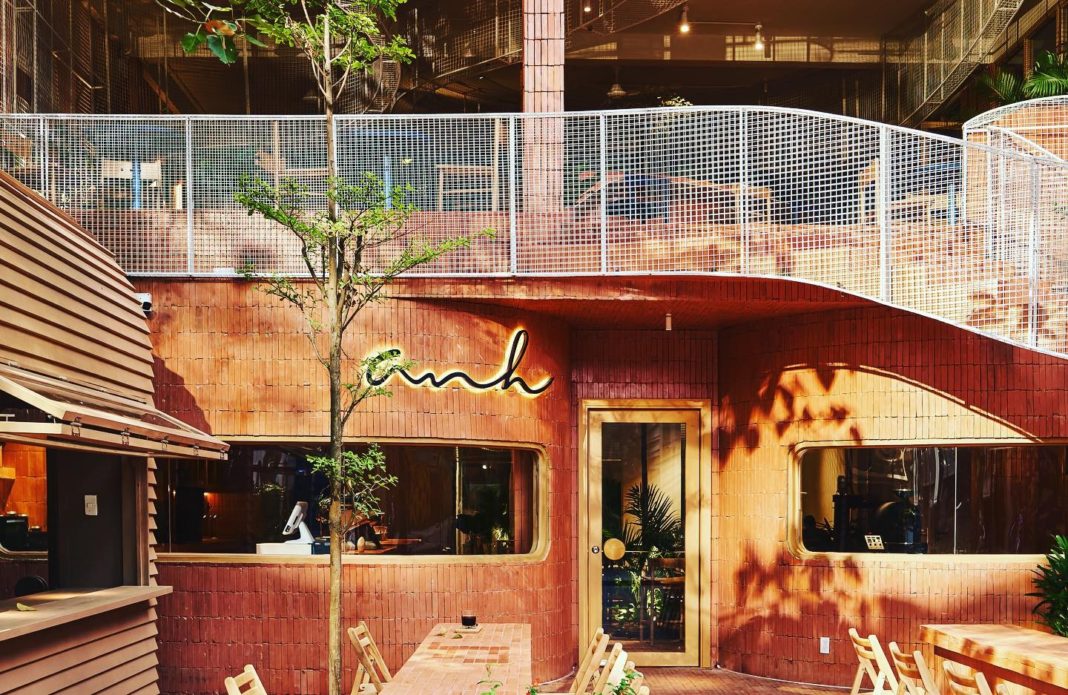1. Basic Space Coffee (Ayutthaya, Thailand)
While it may seem nondescript at first, Basic Space Coffee in Ayutthaya showcases a beautiful mix of old and new. BodinChapa Architects drew inspiration from the cafe’s long history and reinterpreted its traditional use. Once a home, grocery store, and restaurant, the building’s past use have all contributed to its gradual expansion. As such, the designers wanted to keep as much of its history as possible while also meeting the needs of its current use as a quaint coffee shop.
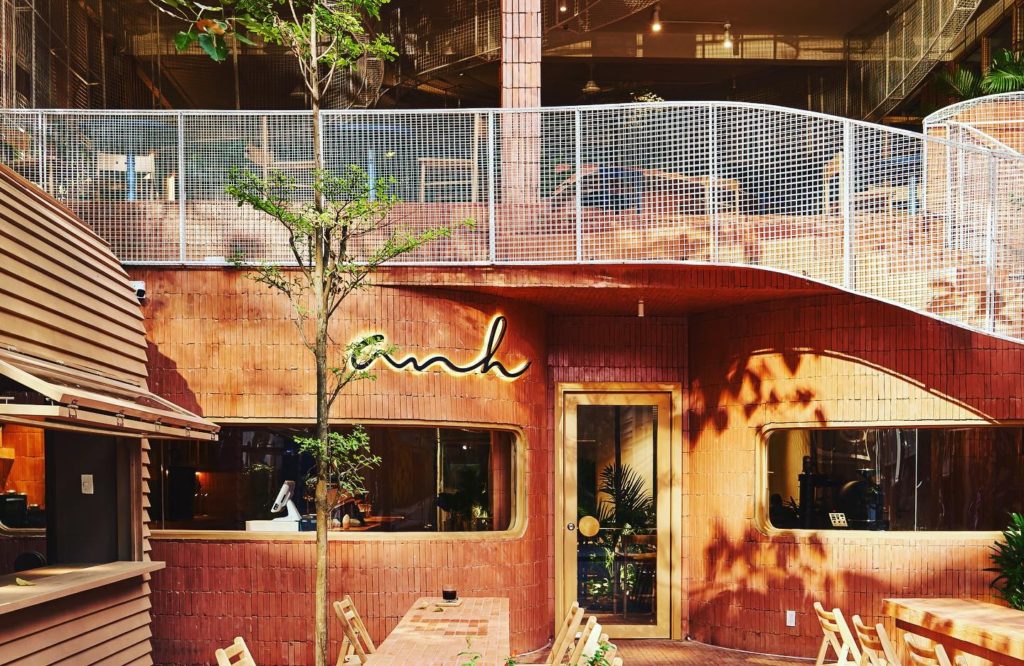 “Adding new materials to the area should not destroy the original charm but pushes it to continue in the modern era sustainably,” BodinChapa Architects noted on their design objective.
“Adding new materials to the area should not destroy the original charm but pushes it to continue in the modern era sustainably,” BodinChapa Architects noted on their design objective.
To maintain the traditional look, they preserved much of the building’s exterior, particularly the roof trusses and other materials. They focused the modern touch in the interior space, starting with replacing the flat ceiling into a sloped one that follows the gable roof. This extra vertical dimension gave the shop area a more airy atmosphere. The owner wanted to keep some memorable furniture pieces. These include table sets and the Kha-sing wooden table that was seamlessly repurposed as the coffee bar.
The cafe is also surrounded by wooden doors and big windows which serve as accents for both the indoor and outdoor seating areas. The ingeniously designed windows can also be opened to create divisions between the outdoor seats. More traditional furniture in the outdoor seating area connect the coffee shop to the kitchen area and the rest of the property.
2. Tewa Cafe (Ayutthaya, Thailand)
Also in Ayutthaya and another project of BodinChapa Architects, Tewa Cafe mirrors the modern ideas that the new generation of owners wanted to bring into the property. The entire space actually combines two establishments: Pae Thewaraj, a 40-year-old traditional Thai restaurant, and Tewa Cafe, which serves Italian food and drinks.
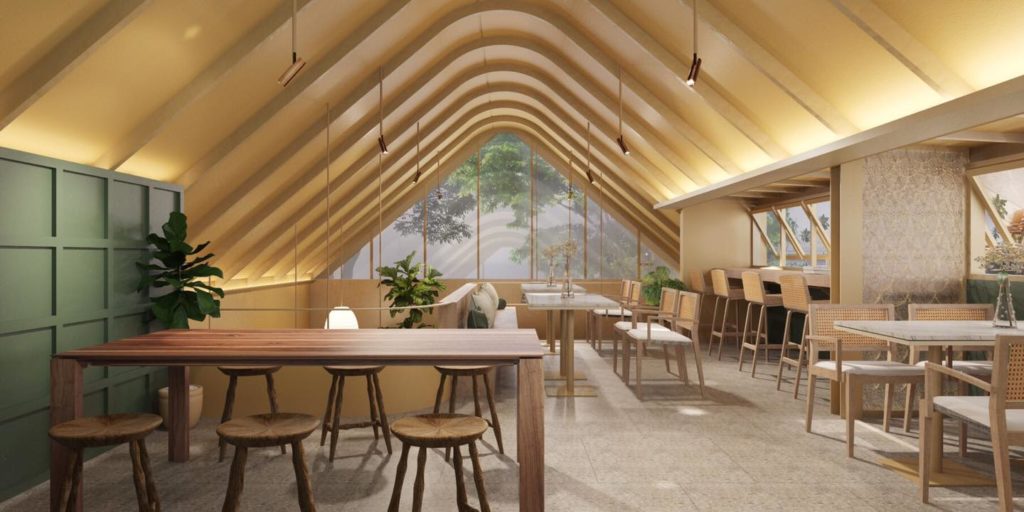 To connect the two establishments, the designers decided to use the carp fish as the main theme. Apart from being an icon of the restaurant, the carp fish also represents the establishments’ proximity to the nearby Pasak River. The designers presented this concept at the property’s facade by using gray brick material to depict fish scales. This design is present in the interiors as well, creating a connection between the outdoor and indoor areas. The brick structure also cleverly hides a wheelchair ramp for the convenience and accessibility of the elderly and the disabled.
To connect the two establishments, the designers decided to use the carp fish as the main theme. Apart from being an icon of the restaurant, the carp fish also represents the establishments’ proximity to the nearby Pasak River. The designers presented this concept at the property’s facade by using gray brick material to depict fish scales. This design is present in the interiors as well, creating a connection between the outdoor and indoor areas. The brick structure also cleverly hides a wheelchair ramp for the convenience and accessibility of the elderly and the disabled.
The first floor houses the heart of the entire property, showcasing the cafe counter where the drinks are made. Access to the second floor is through the outside staircase. This not only eases the foot traffic in the first floor, but also provides privacy to the diners in the area. Other modern touches include big glass windows and panels, sloped ceiling, indoor gardens, and elegant wooden interiors.
3. Anh Coffee Roastery (Ho Chi Minh, Vietnam)
Located in the heart of Ho Chi Minh City, Anh Coffee Roastery is a new and spacious addition to Vietnam’s bustling coffee market. According Red5 Studio, “the scene of the basalt red land growing coffee on cloudy days” inspired their design. The feeling of being “immersed in that floating place” also became their primary material and inspiration for the project.
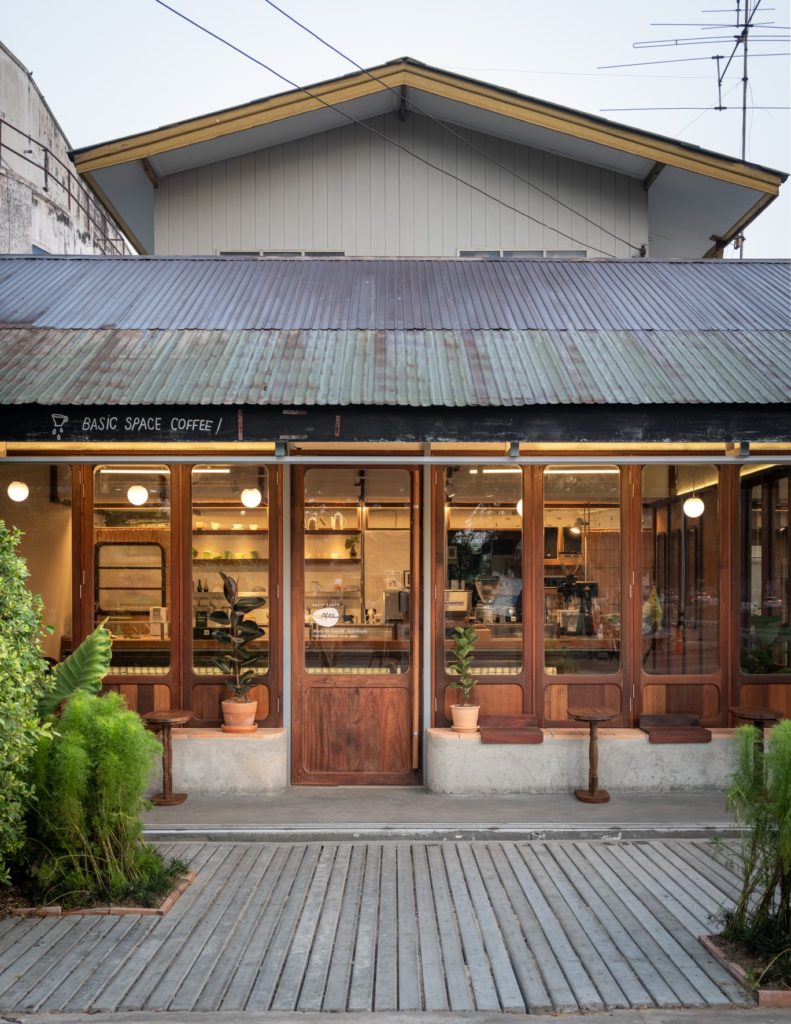 The current property was actually built from an old building. The designers connected some of the existing columns with a large, curved common table strip that spans across the entire space of the first floor. A mini indoor garden also punctuates this structure, adding splashes of green against the white and terracotta red interiors. The brick design is also seamlessly integrated in the generous outdoor seating of the coffee shop.
The current property was actually built from an old building. The designers connected some of the existing columns with a large, curved common table strip that spans across the entire space of the first floor. A mini indoor garden also punctuates this structure, adding splashes of green against the white and terracotta red interiors. The brick design is also seamlessly integrated in the generous outdoor seating of the coffee shop.
For the cloud portion of their design concept, they built an iron grid system that runs along the ceiling throughout both floors and the façade. Navy blue, the brand’s signature color, and natural wood were also cleverly incorporated into the space.
4. HHT Coffee (Da Lat, Vietnam)
HHT Coffee (Duong May Xu Hoa Da Lat) sits on a scenic hillside three kilometers away from central Da Lat City in the Central Highlands region of Vietnam. As such, it’s easy to see why P.I Architects made sure to provide an unobstructed view of the valleys in their design. In fact, the first time they visited the site, they simply stood still and admired the landscape from the spot where the coffee shop would be built.
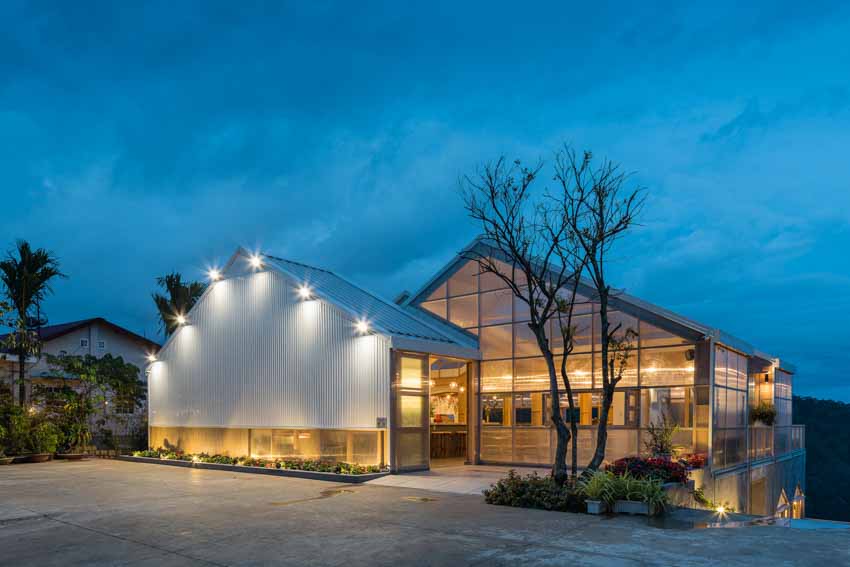 Inspired by this view, they recreated the undulating hills on the layered shapes of the roof accent. The landscape also gave them the idea to create a transitional space between the indoors and the outdoors. This, they said, allow visitors to “enjoy the pure air of the highland on a beautiful day.” To achieve this vision, they turned to the local greenhouses as the main inspiration. The result is the airy glasshouse design that the cafe became known for.
Inspired by this view, they recreated the undulating hills on the layered shapes of the roof accent. The landscape also gave them the idea to create a transitional space between the indoors and the outdoors. This, they said, allow visitors to “enjoy the pure air of the highland on a beautiful day.” To achieve this vision, they turned to the local greenhouses as the main inspiration. The result is the airy glasshouse design that the cafe became known for.
“Putting aside the impacts of those greenhouses to the environment, we wanted to reproduce the images of them lit up in the night, draw many visitors to Da Lat,” the architects added. “That’s why polycarbonate was chosen to envelope the building. This material, combined with glass where necessary to prioritize the view of the landscape, create the effect of a ‘lit up greenhouse’ at night.”
5. Segitiga Bermuda Coffee and Eatery (Tangerang, Indonesia)
Inspired by the brand identity of Segitiga Bermuda Coffee and Eatery, STUDIE had the bright idea to design a triangular building that stands out from its location. To achieve this, they oriented the main structure 45 degrees sideways from the main road. This created a striking three-dimensional effect that certainly catches the attention of passers-by.
The architects also added a walkway leading to the beautiful glass facade of the cafe, which also serve as the perfect picture-taking spot. The spacious outdoor seating also provides the best views of the the main building, especially at night. Red bricks serve as outdoor and indoor accents of the mostly concrete and geometric elements of the property. The interiors feature a terazzo motif for the flooring, with some split stone accents on the right and left corners of the dining area to fill the unused space.
The sloped glass windows of the main coffee shop also create a dramatic effect from the inside when it rains. “What is unique about this interior is that when it rains, the windows on the right and left of the building become blurry due to the heavy downpour,” the designers noted. “When the rain subsides, the windows become dewy. This makes the conditions inside the building more poetic.”
According to bluprint.onemega.com




